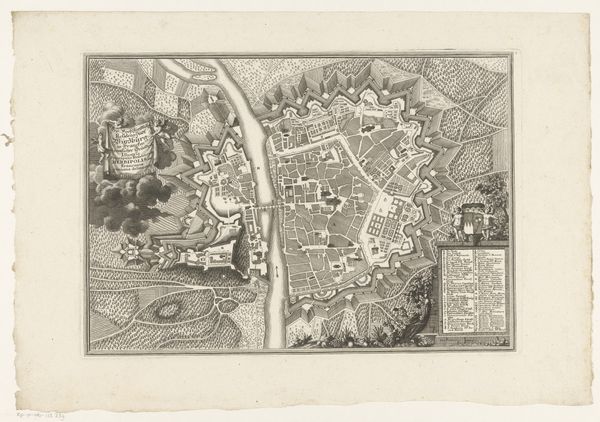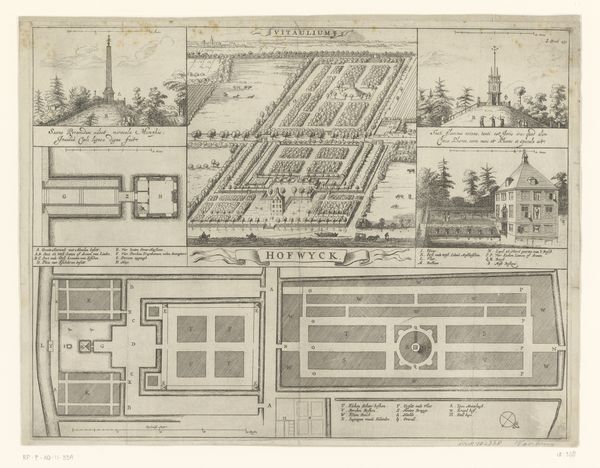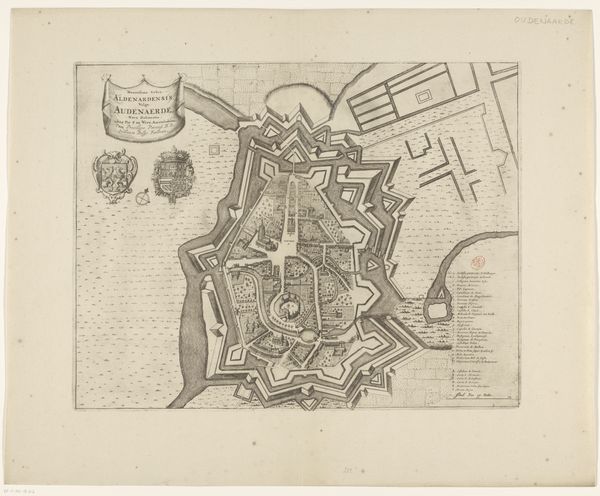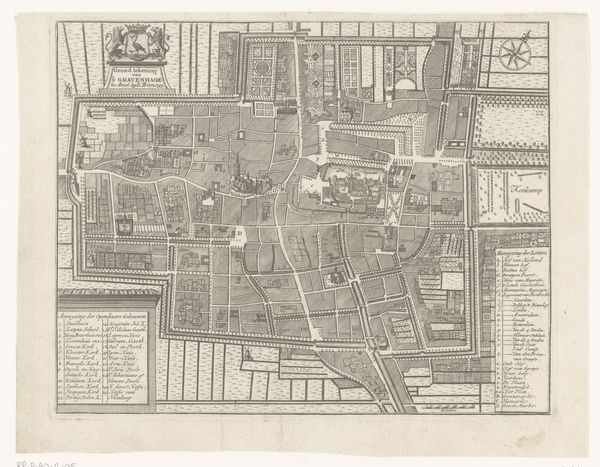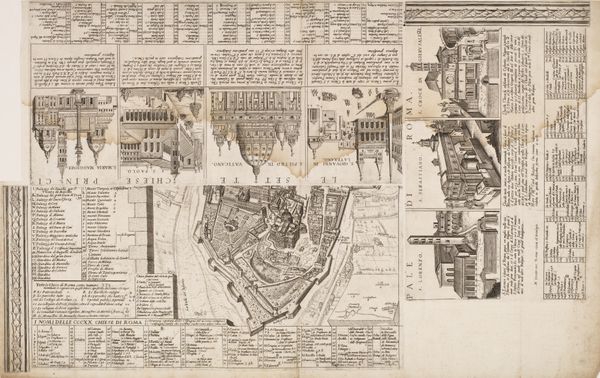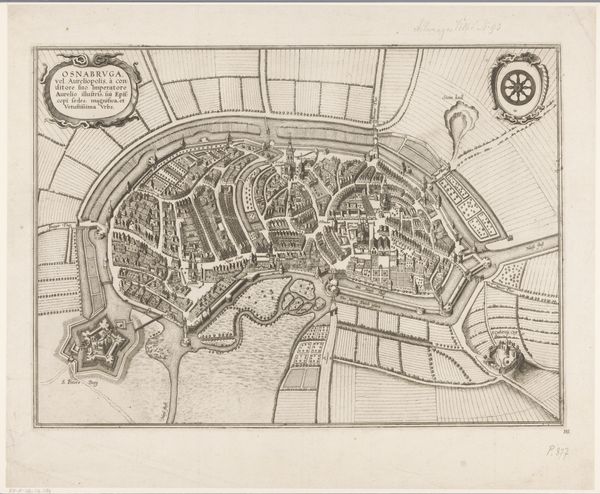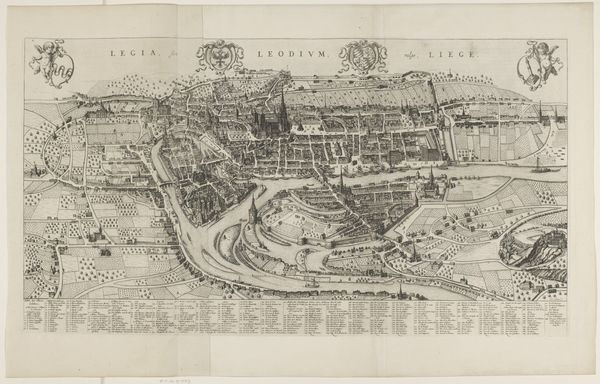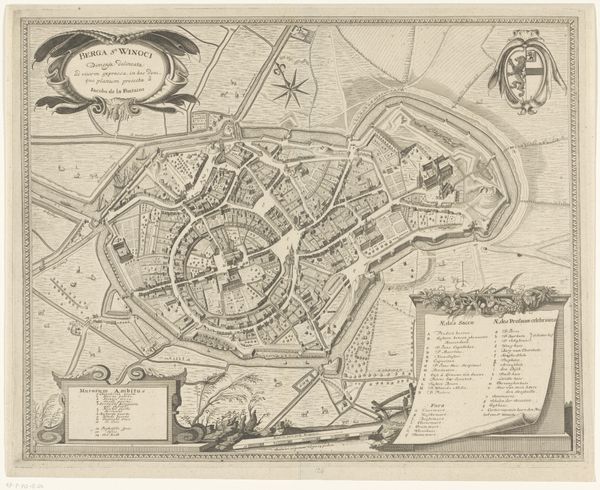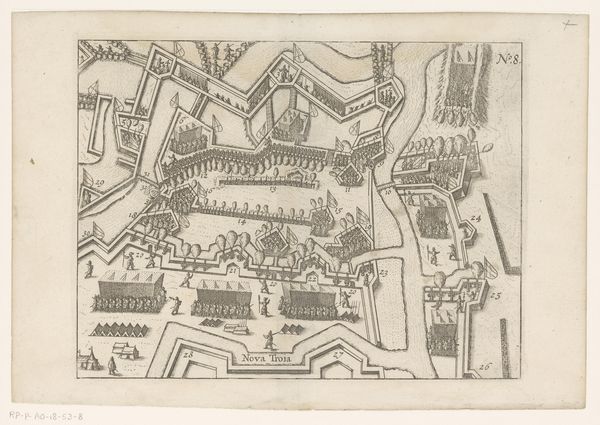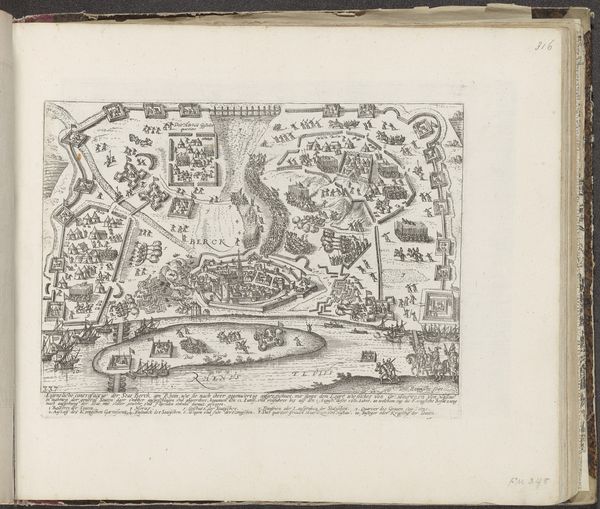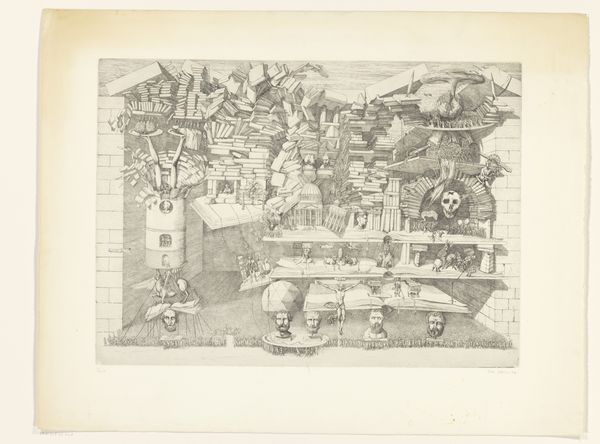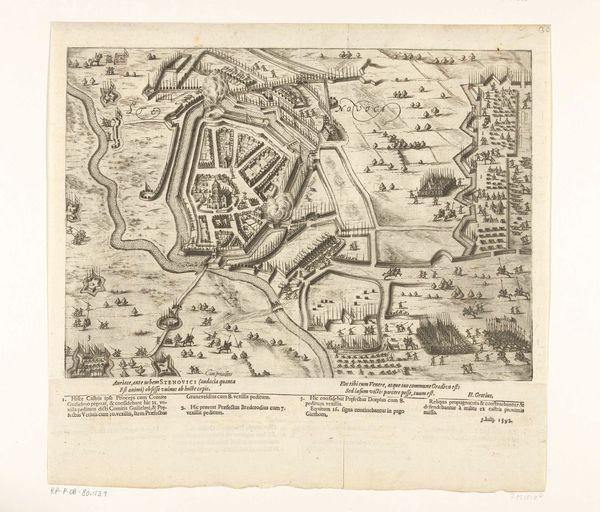
graphic-art, print, etching
#
graphic-art
#
dutch-golden-age
# print
#
etching
#
cityscape
#
northern-renaissance
Dimensions: height 462 mm, width 524 mm
Copyright: Rijks Museum: Open Domain
Editor: This is "Plattegrond van Den Haag, 1570," though this particular print dates to sometime between 1730 and 1736. It's an etching, offering a bird's-eye view of the city. What strikes me is the clear separation between the structured urban area and the surrounding natural landscapes. What do you see in this piece, from a socio-historical perspective? Curator: This print offers us a fascinating glimpse into the relationship between power, urban planning, and environmental control during that period. We see the city meticulously mapped, every street and building precisely rendered, but the real story, for me, is in what is included versus what’s omitted, and the ways those choices reinforced social hierarchies. Consider how the "nature" that surrounds the city appears ordered, almost sculpted. Editor: It looks almost like a garden or an estate, deliberately constructed. Curator: Precisely! How might the ordered depiction of nature reflect the societal values of the time? Was this "ordering" imposed on other groups, as well, for example, women? Editor: That's a powerful point. It highlights how landscapes, even in art, aren't neutral spaces. They embody specific ideologies. So the act of mapping becomes not just a record, but also an act of controlling and defining space, people and…narratives. Curator: Exactly! This cartographic lens, as a way of seeing and interpreting urban environments, intersects with socio-political systems in incredibly revealing ways. Think of who owned this map. Was it readily accessible to the people? Editor: Probably not. That adds another layer to this; it's an assertion of dominance. Curator: Reflecting on how artistic choices are intertwined with societal norms can open pathways towards questioning prevailing narratives. Editor: I agree. I am already approaching art and urban planning from a radically new, critically conscious, intersectional point of view.
Comments
No comments
Be the first to comment and join the conversation on the ultimate creative platform.
